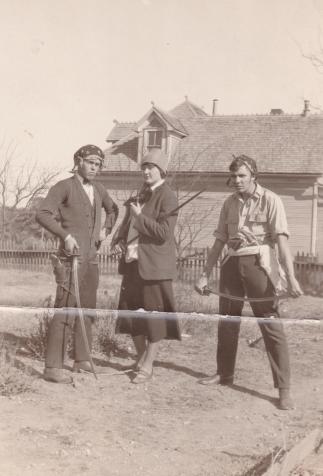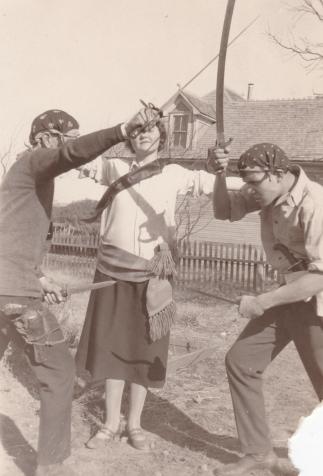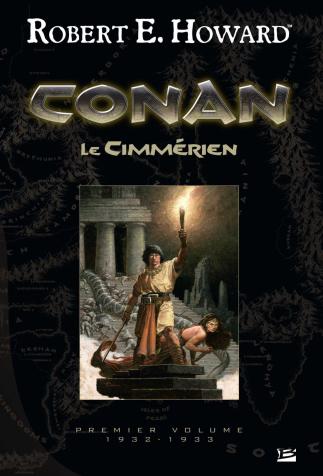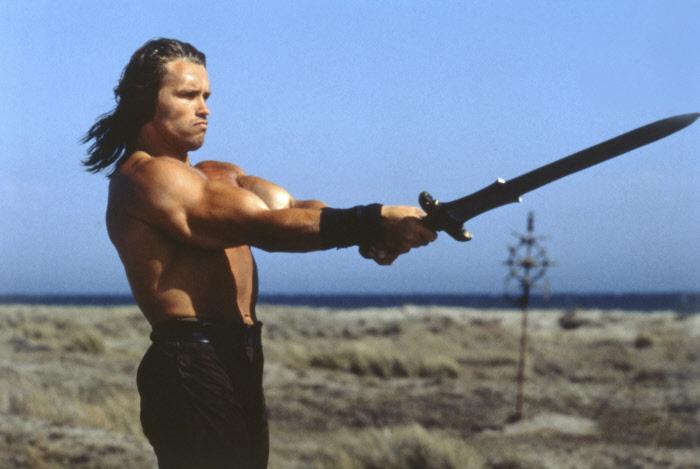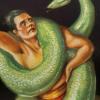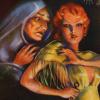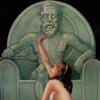Conan: The Story of a Hero, from the Pulps to the Silver Screen
Created by Robert E. Howard, the character Conan has evolved greatly since his initial appearance in the 1930s. Revisited by numerous authors, the Cimmerian warrior has also been adapted frequently for other media.
Robert E. Howard: A Brief but Prolific Career
Conan the Cimmerian, whose adventures in the Hyborian Age ran in the pulp magazine Weird Tales from 1932 to 1936, is clearly the most famous character to emerge from the fertile imagination of Robert E. Howard, an American master of fantasy. Howard is part of the “heroic,” or “sword and sorcery,” sub-genre, which is somewhat artificial because it was tailor-made for his oeuvre: a solitary hero with exceptional strength and skills as a warrior travels traverses a violent world overflowing with evil magic. But the oeuvre of Howard (1906-1936), who took his own life at age 30, is not limited to that one memorable hero. In a dozen years of writing, he produced a massive body of work in a range of different genres, from boxing narratives to historic and adventure tales.
His fantasy/magic vein is also illustrated by his stories about Solomon Kane, a Puritan who fought fanatically against demons (launched in 1928), and Kull of Atlantis (written from 1926 to 1930). He also maintained a voluminous correspondence, discussing, most notably, the notions of civilization and decadence with Howard P. Lovecraft (1890-1937), the creator of the “Cthulhu Mythos” in the pages of the same magazine, Weird Tales.
As soon as it was published, Howard’s work began inspiring imitators: Catherine L. Moore, in her Jirel de Joiry series (from 1934) and her husband, Henry Kuttner, with Elak of Atlantis (from 1938), both picked up on Howard’s ideas and ran with them.
A Tampered Legacy
The successive discovery of unpublished manuscripts and fragments left behind by Howard made it possible to continue the hero’s original adventures. Lyon Sprague De Camp, a fantasy writer himself, obtained the rights to Howard’s texts. At first he simply got them published as is, but by 1955, he had begun rewriting and rearranging unpublished fragments for Tales of Conan. In 1965, he enlisted the support of the writer Lin Carter to pursue what he termed a “posthumous collaboration,” but what the Howard specialist Patrice Louinet, who translated an edition of record that reestablishes Howard’s original, describes as a “literary hold-up.” The essence of Howard’s pessimistic and disillusioned character was indeed betrayed by a chronological arrangement that organized the tales in such a way as to lead Conan towards ever more power and glory.
Be that as it may, the edition published by Lancer Books starting in 1966, with illustrations by Frank Frazetta, was a huge success that led to the multiplication and accumulation of volumes devoted to Conan by a number of different authors. Robert Jordan, for example, the author of the famous Wheel of Time series (1990-2013 (posthumous), wrote seven Conan novels in just three years (1982-1984).
A Multi-Media Aura
In the 1970s, Conan also turned into a hit comic-book hero. Marvel Comics came up with more new adventures, with Conan the Barbarian, starting in 1970, followed by the Savage Sword of Conan, from 1974, and finally, Red Sonja, from 1972, which was inspired by a heroine Howard had created.
His oeuvre’s perennial attraction did not escape Hollywood’s attention, which led to Arnold Schwarzenegger’s memorable interpretation (in Conan the Barbarian, directed by John Milius, 1981; Conan the Destroyer, Richard Fleischer, 1984, and Red Sonja, Richard Fleischer, 1985). Then came Jason Momoa in Conan the Barbarian, a remake by Marcus Nispel that came out in 2011. Howard’s hero’s story lives on in role-playing games and video games, including the MMORPG Age of Conan (Funcom), launched in 2008.
